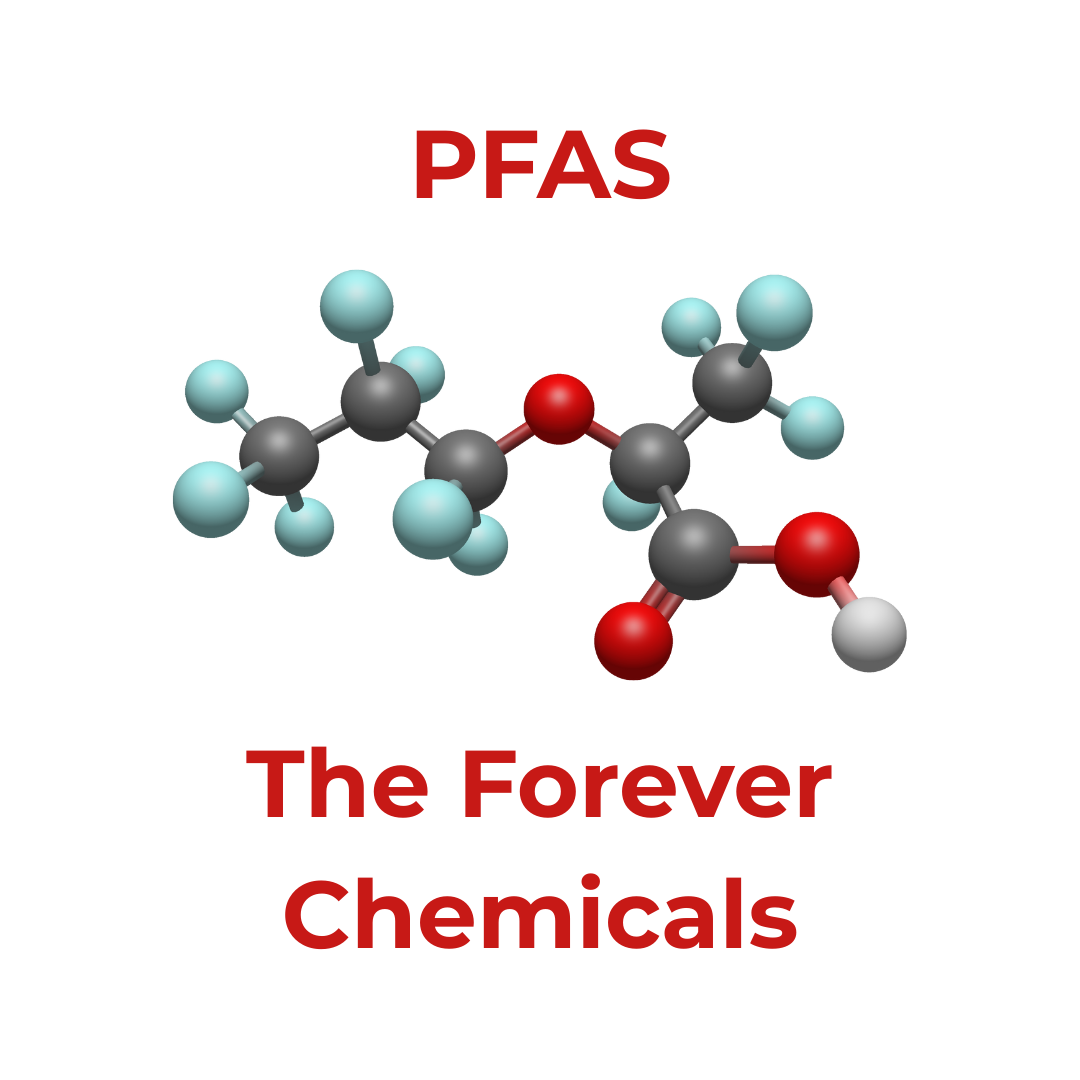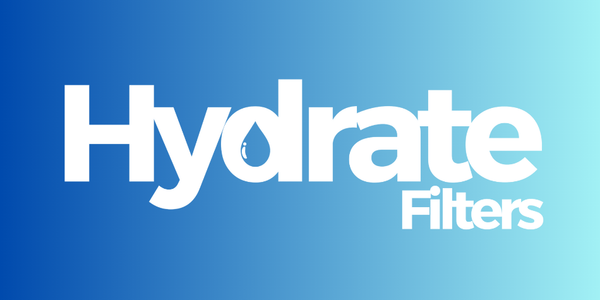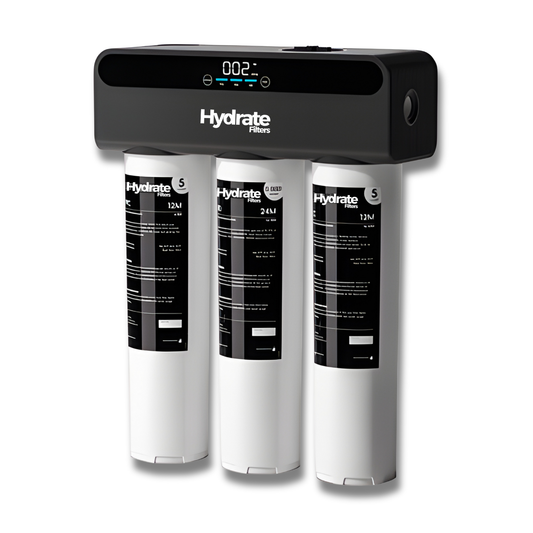PFAS - The "Forever Chemical" in our environment, and what they mean for our health.

Share
PFAS The “Forever Chemicals” in Our Environment - And What They Mean for Your Health
Key takeaways
-
PFAS are a vast family of man-made chemicals valued for their water-, oil- and heat-repelling properties; they persist in the environment and in our bodies.
-
The biggest everyday exposure for most people is ingestion (drinking water and some foods).
-
Health agencies link certain PFAS with increased cholesterol, reduced vaccine response, pregnancy-related hypertension, small reductions in birth weight, and (for PFOA specifically) kidney and testicular cancer.
-
Regulations are tightening: the U.S. set legally enforceable MCLs of 4 ppt for PFOA/PFOS and 10 ppt for PFNA, PFHxS, and GenX (HFPO-DA), plus a Hazard Index of 1 for mixtures; the EU’s Drinking Water Directive adds “Sum of PFAS” (0.1 µg/L) and “PFAS Total” (0.5 µg/L) parameters.
-
Effective household risk-reduction options include high-quality POU (point of use) filtration systems designed to remove PFAS. Eliminating all non-stick cookware.
What are PFAS?
PFAS (per- and polyfluoroalkyl substances) are a large class (thousands) of synthetic chemicals used since the 1950s in nonstick cookware, water-repellent textiles, stain-resistant carpets, certain food packaging, firefighting foams and more. Chemically, most PFAS include highly fluorinated carbon groups that make them both durable and slippery, which is why industry loves them and why nature can’t break them down easily. That persistence is why they’re often called “forever chemicals.”
Where are PFAS in our environment?
-
Water: PFAS can leach from industrial sites, landfills, wastewater, and especially legacy firefighting foam (AFFF) use at airports and military bases into groundwater and surface water. A U.S. GAO review and multiple investigations have documented widespread contamination around defense facilities.
-
Food & wildlife: PFAS accumulate in fish and game. Studies have reported concerning levels in freshwater fish—one U.S. analysis linked a single freshwater fish meal to roughly a month of drinking water at high-PFOS levels.
-
Air & dust: Indoor dust and air can carry PFAS from treated textiles, carpets, and some consumer products, adding to low-level inhalation and ingestion exposures.
-
Consumer products: Historically used in nonstick cookware coatings, grease-resistant food papers, certain cosmetics, dental floss, and stain-resistant treatments. (In the U.S., PFAS-containing grease-proofing agents for paper food packaging are no longer sold as of 2024–2025.)
How people are exposed
People encounter PFAS mainly through drinking water and food (including fish). Other routes include swallowing contaminated dust or soil, breathing indoor air with PFAS-containing particles, and occupational exposures (e.g., firefighters, chemical manufacturing). For most households, ingestion dominates; showering/bathing in water containing PFAS contributes to some degree.
What does PFAS do in the body?
Some PFAS stay in the body for years. Estimated human half-lives range roughly from ~2–10 years for PFOA, ~3–27 years for PFOS, and longer for PFHxS—much shorter for certain “short-chain” PFAS.
Health effects the science supports
Based on evaluations by U.S. health agencies and the National Academies, associations with certain PFAS exposures include:
Current peer-reviewed scientific studies have shown that exposure to certain levels of PFAS may lead to:
- Reproductive effects such as decreased fertility or increased high blood pressure in pregnant women.
- Developmental effects or delays in children, including low birth weight, accelerated puberty, bone variations, or behavioral changes.
- Increased risk of some cancers, including prostate, kidney, and testicular cancers.
- Reduced ability of the body’s immune system to fight infections, including reduced vaccine response.
- Interference with the body’s natural hormones.
- Increased cholesterol levels and/or risk of obesity.
Good news: as some legacy PFAS were phased out, average blood levels of PFOS and PFOA in the U.S. population fell sharply (≥85% and ≥70% declines respectively from 1999–2000 to 2018–2019). That said, replacement PFAS are now more common in monitoring. (atsdr.cdc.gov)
The regulatory picture (quick snapshot, 2024–2025)
-
United States (drinking water): EPA finalized enforceable drinking-water limits in April 2024—4 ppt for PFOA and PFOS; 10 ppt for PFNA, PFHxS, and GenX (HFPO-DA); and a Hazard Index (HI) MCL of 1 for mixtures containing two or more of PFHxS, PFNA, HFPO-DA, and PFBS. Systems must monitor and, if needed, install treatment. (US EPA)
-
Cosmetics: A Pioneering Ban on PFAS
-
The Environmental Protection Authority (EPA) of New Zealand has enacted a ban on PFAS in cosmetic products effective 31 December 2026 Wikipedia+15EPA New Zealand+15Ministry for the Environment+15.This move makes NZ one of the first countries globally to prohibit the use of PFAS in cosmetics Wikipedia. The ban stems from precautionary policy, recognizing that PFAS persist in the environment and can accumulate in human bodie
-
United States (cleanup): In 2024, EPA designated PFOA and PFOS as hazardous substances under CERCLA/Superfund, strengthening cleanup accountability and reporting.
-
European Union: The recast Drinking Water Directive introduces two PFAS parameters—Sum of PFAS (0.1 µg/L) and PFAS Total (0.5 µg/L)—with compliance required by 12 January 2026. Technical guidance for monitoring methods was published in 2024.
Why PFAS are hard to remove (and what actually works)
PFAS are highly persistent and many are mobile in water. Long-chain PFAS (like PFOS, PFOA) adsorb more readily to carbon and ion-exchange media; some shorter-chain PFAS are tougher, making treatment design important. At drinking-water plants and in homes, the most established options are:
-
High-quality Carbon Block filters - Carbon block filters with low micron ratings (sub 1-micron) have shown high effectiveness in PFAS removal.
- Granular Activated Carbon (GAC) – widely used; less effective - effectiveness depends on media, flow, and PFAS profile.
-
Anion Exchange (AIX) – effective for many PFAS, sometimes more effective than GAC.
-
Reverse Osmosis (RO) – highly effective as point-of-use (under-sink) systems; concentrates PFAS in reject water which then requires proper disposal.
When choosing home products, look for NSF/ANSI certification for PFAS reduction: Standard 53 (filters) or Standard 58 (RO). NSF updated protocols to expand beyond PFOA/PFOS and is aligning with EPA’s new rule; certification labels provide independent proof of performance.
How PFAS move through the economy and environment
-
Industrial & military legacies: Historic use of AFFF firefighting foams is a major contamination source around airports and defense sites. Cleanup is ongoing and technically challenging.
-
Waste & biosolids: PFAS can pass through wastewater plants, ending up in effluent and sludge; land-applied biosolids can move PFAS into soils and groundwater. (Regulation and monitoring are increasing.)
-
Product life cycle: Because PFAS don’t readily degrade, products can shed PFAS into indoor dust/air during use and disposal, creating diffuse, long-term sources.
What this means for families
For most households, priorities are: (1) filter your water, (2) eliminate non-stick pans/trays, (3) trim product sources, and (4) focus on overall health.
-
Filter you water
-
If you’re on a public system, prioritize a high-quality POU (point of use) filter for all drinking/cooking water.
-
Eliminate products containing PFAS
-
Non-stick cook wear, especially older, damaged coatings - these can be major PFAS sources. opt for high-quality stainless steel products.
-
Trim product sources
-
Prefer PFAS-free labels for textiles and cookware; limit contact with old stain-resistant carpets/upholstery if shedding.
-
Keep perspective on bathing & showers
-
Skin absorption from PFAS in water is low; ingestion remains the main concern. However, filtered water is recommended.
The bottom line
PFAS are everywhere because they work so well, and last so long. The key is reducing what gets into our bodies, primarily via water and food. With stronger standards now in place, proven treatment technologies available, and smarter product choices, communities and households can meaningfully cut exposure while the broader cleanup and phase-outs continue.
Why Whole-House Systems Are Far Less Effective for PFAS Removal
Whole-house filtration systems are designed primarily to improve water aesthetics (taste, odor, sediment, chlorine) and protect household plumbing—not to target complex contaminants like PFAS. While large-capacity carbon tanks may provide some reduction, they are not optimized for PFAS because:
-
Short Contact Time: Water moves quickly through whole-house units, giving contaminants less opportunity to adsorb onto carbon media. PFAS, being highly persistent and mobile, require longer contact times and specialized carbon blocks or membranes for meaningful reduction.
-
Broader Treatment Goal: Whole-house systems are built to treat thousands of liters per day at high flow rates. This design prioritizes flow and coverage over fine contaminant removal.
-
Lack of Certification: Very few whole-house filters are NSF/ANSI certified for PFAS reduction. Certification is typically found only in point-of-use systems (under-sink, countertop, RO, or specialized carbon block filters).
-
Cost and Maintenance: To achieve PFAS-level reduction at whole-house scale, systems would require extremely large and frequently replaced carbon beds or advanced membranes—making them impractical for most households.
Effective Filtration Technology
Our UFX3 4-Stage Filtration System is specifically engineered to target persistent contaminants like PFAS (“forever chemicals”). The system combines two advanced carbon block stages with the final stage a 0.5-micron carbon block for maximum adsorption capacity, ensuring highly effective reduction of PFOA, PFOS, and related compounds.
The addition of a 0.01-micron ultrafiltration (UF) membrane provides a further physical barrier, capturing fine particulates and micro-pollutants that carbon alone cannot address. This dual-mechanism approach—adsorptive removal plus ultrafiltration—delivers exceptional protection, aligning with technologies recognized by the U.S. EPA and NSF as effective for PFAS reduction.
The result is a high-performance system that not only enhances taste and clarity but also provides families with greater confidence that their water is safer, cleaner, and protected from PFAS contamination.
More information in the link below.




